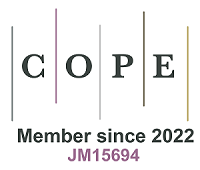fig2
Figure 2. Analysis of EML4-ALK fusion transcripts in SEC fractions from H2228 and H3122 cell lines. SEC fractions 9-11 (EVs), 15-17 (LPPs), and 19-21 (protein) for H2228, and fractions 9-12 (EVs), 14-16 (LPPs), and 19-21 (protein) for H3122, were pooled and subjected to RNA extraction. (A) RNA size profiles in pooled fractions, analyzed using the Bioanalyzer RNA 6000 Pico assay. Graphing software: Agilent 2100 Expert Software; (B) Detection of EML4-ALK translocation in EV-, LPP-, or protein-enriched fractions using dPCR. A variant 3 TaqMan assay was used for H2228 samples, and a variant 1 assay for H3122. Graphing software: QuantStudio 3D AnalysisSuite Cloud Software. Each dot represents a well on the dPCR chip. Blue dots indicate wells with at least one copy of the EML4-ALK translocation (FAM); red dots represent the detection of the endogenous PUM1 gene (VIC); Yellow and green dots indicate wells negative or positive for both genes, respectively; Grey dots represent wells not classified by the analysis software. EML4-ALK: Echinoderm microtubule-associated protein-like 4-anaplastic lymphoma kinase; SEC: size-exclusion chromatography; EV: extracellular vesicle; LPP: lipoprotein particle; dPCR: digital polymerase chain reaction; RNA: ribonucleic acid; FAM: 6-carboxyfluorescein; PUM1: pumilio RNA binding family member 1.











